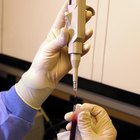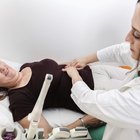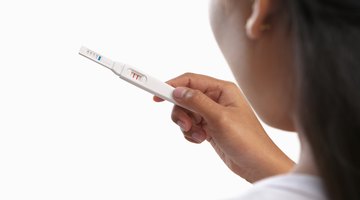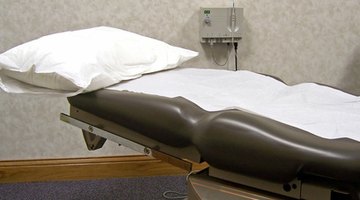First Signs of Pregnancy After IVF Embryo Transfer
When a couple has difficulty conceiving a child, several assisted reproductive technologies are available to achieve a successful pregnancy.
One of these methods is a two-step process that involves fertilization of a woman's egg with her partner's sperm in the laboratory, called in vitro fertilization -- IVF -- followed by implantation of the resulting embryo in her uterus. The first signs of successful implantation and early pregnancy generally appear by about two weeks after the procedure.
Earliest Signs
When the embryo implants into the uterine wall, small capillaries in its lining may be damaged and bleed. This can cause spotting or a small amount of bleeding, although it might also be absent or not noticeable after embryo transfer.
A woman could also experience some minor cramping as the embryo implants. On the other hand, many women experience neither bleeding nor cramping. One of the other early signs of pregnancy, whether from assisted technology or a pregnancy that results naturally, is a missed period.
Other Signs

Menopause and HCG
Learn More
A woman who's undergone embryo transfer might notice several other changes within two weeks of the procedure, although most of these physical symptoms appear later if they appear at all. Her breasts might become swollen or tender, or feel sore when touched, changes that reflect increases in female hormones during pregnancy. Sometimes, the tenderness subsides after a few weeks, but then returns later in pregnancy as the breasts grow and put pressure on their supporting ligaments. The sudden rise in hormones could also cause headaches during the first weeks, although many women don't have this symptom. A woman might also experience nausea, or morning sickness, although this sign might not appear until later in the pregnancy, or not at all.
Subtle Changes
Some signs that an embryo transfer has been successful can be extremely subtle.
For example, a woman might feel slightly fatigued, a sign that can appear as early as the first week or two, and she might find herself taking a nap or a quiet rest during the afternoon.
It's also quite normal for a woman to have no change in how she feels and no clear sign that anything special is going on in her body after a successful embryo transfer. She may not have any cramping or spotting, especially if the embryo implants high up on the uterine wall, and other signs of pregnancy may not develop until later, a potentially stressful situation while she waits for testing to confirm that she's pregnant.
Early Testing

Cervical Changes During Menopause
Learn More
Generally, a couple who has undergone IVF and embryo transfer isn't sure of the procedure's success until about one or two weeks after it's completed.
The first test to determine whether implantation has occurred involves measurement of a hormone called human chorionic gonadotropin, or HCG, which is produced by the cells surrounding the embryo.
This measurement is usually made during the first week or two, but can be inconclusive until later stages and may be repeated every few days and accompanied by other testing, such as an ultrasound exam.
Research into more specific testing, published in the July 2012 issue of "The Journal of Assisted Reproduction and Genetics" suggests that measurement of a specific form of HCG called hyperglycosylated HCG could provide an extremely sensitive and reliable test for pregnancy as early as six days after embryo transfer. If you have questions about pregnancy testing or other aspects of embryo transfer, discuss them with your doctor.
Related Articles
- Yen and Jaffe's Reproductive Endocrinology; J.Strauss and R.Barbieri, pp. 856-867.
- American Pregnancy Association: Embryo Transfer
- Journal of Assisted Reproductiion and Genetics: The Sensitivity and Specificity of Hyperglycosylated hCG (hhCG) Levels to Reliably Diagnose Clinical IVF Pregnancies at 6 Days Following Embryo Transfer











